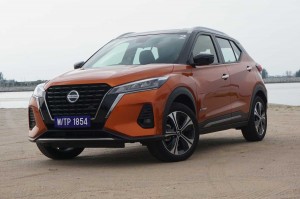Old electric car, bad battery? What to know about used EVs and range
By DPA | 14 May 2021
HAMBURG: If you're looking to switch to an electric car, it doesn't have to be a new one. Used electric vehicles (EVs) are also widely available now, which not only saves you money but is also more sustainable.
But there are a few things you need to pay close attention to.
When buying a used electric car, it makes sense to take it on a long test drive fully charged and with the on-board computer set to zero, which helps to estimate the real range right away, according to EV experts at Europe's biggest car club, Germany's ADAC.
If you have already used up half the charge after 50km, the real range of a fully charged battery should be about 100km, even if the computer still indicates 130 or more kilometres as the remaining range.
If you plan to use the car to drive to work, you need a minimum range of the one-way distance plus some additional kilometres, as long as you are able to recharge the battery at work.
Otherwise, you have to at least calculate with the round-trip distance plus an additional buffer. It’s vital to add these extra kilometres since the real ranges of electric car usually differ from indicated standards between 20 and 40 per cent, according to the ADAC.
As batteries age and the number of charging cycles increase, the range decreases further. In addition, a buffer of 10 to 30 per cent must be factored in - depending on driving behaviour. The outside temperature and whether you're using the heating or air conditioning system can also lower your range.
For example, a range of 200km according to the NEDC (New European Driving Cycle) may turn into a real range of less than 100km on a particularly cold day.
The most expensive part of the electric car is the drive battery. Therefore it is important to take a close look at the warranties, service booklet and workshop inspection records. Many manufacturers offer warranties of 8 years or 100,000 to 200,000km.
In many cases, a warranty case exists if the battery falls below a certain limit declared by the manufacturer - for example, 70 per cent. If in doubt, the battery can also be checked at an authorised dealer, says the ADAC.
Another important feature is a fast charging function (DC/Direct Current), which allows you to recharge while on the road, according to the ADAC, predicting that the CCS (Combined Charging System) will become established in the long term.
For charging on alternating current (AC), the Type2 plug is the standard throughout Europe. However, older cars with a Type 1 connector can be charged at public charging stations using an adapter cable.
Tags
Autos News
Reviews

Proton e.MAS 7 impresses in quick dynamic driving exercises

Nissan Kicks e-Power: Kicking off a new efficiency

6.8
Mercedes-Benz GLB 200: Measured versatility

MG5: Slick and comfortable cruiser

8.2
Kia EV9: Prime cut

8.0
Triumph Tiger 1200 GT Pro: High adventure on two wheels

8.0
Honda Civic Type R (FL5): Ride on the wild side

Mitsubishi Xpander facelift: Expanding the reach
Videos

Jaguar's Bold Type 00 Concept: A Glimpse into the Future of ...

20 Years Strong: BMW's Johor Regional Hub Just Got Bigger

Aveta VTM 250; Affordable & Road Legal Adventure Bike
